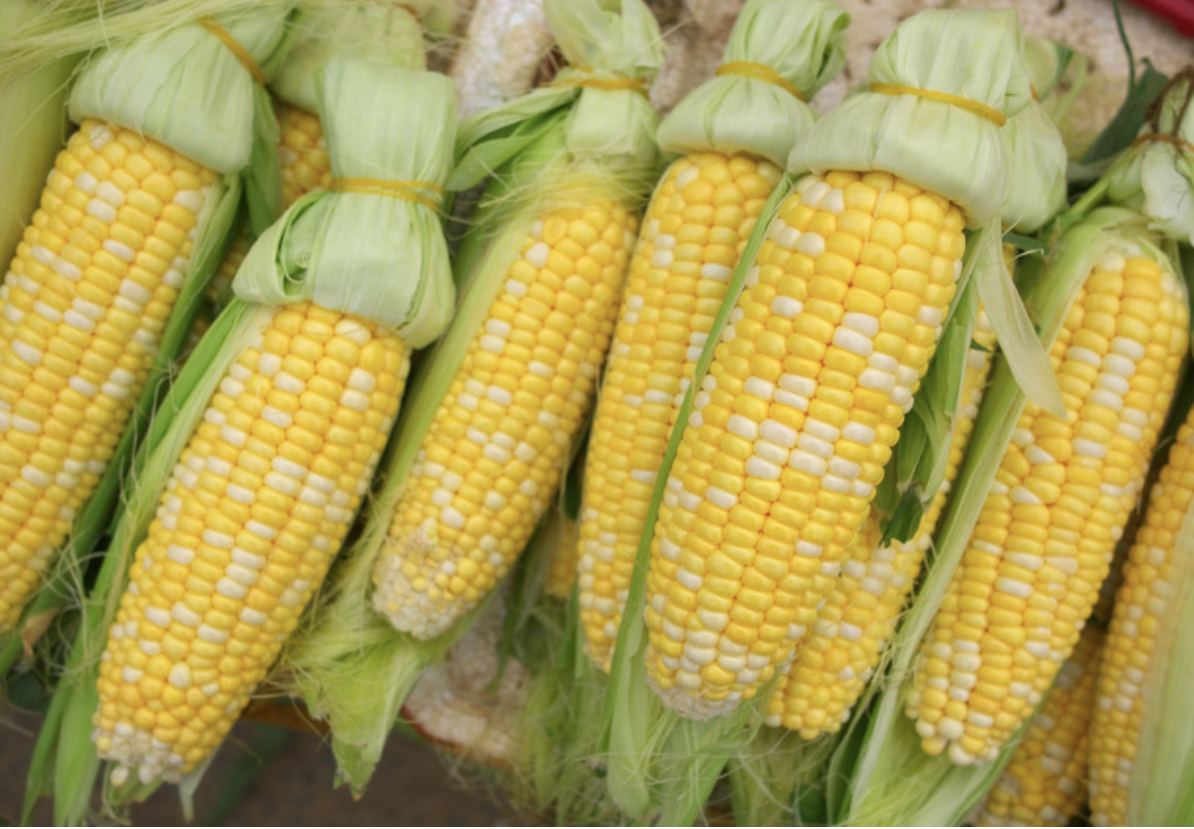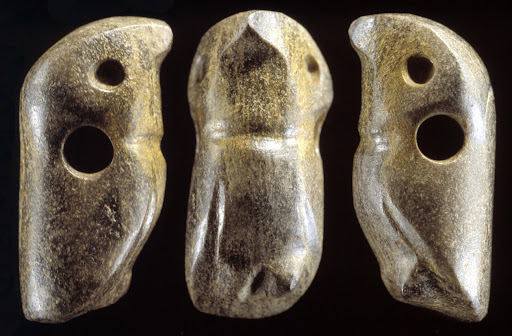Sweet corn grows on over 2000 acres in Mississippi, according to MSU’s Ag Extension Office, mostly in the Delta, with Washington and Leflore Counties as the leading corn producers, followed by Bolivar, Sunflower, Tallahatchie, and Sharkey.
Harvesting corn at the right time is critical to ensure its maximum flavor and sweetness. Typically, corn is ready for harvest about 20 to 25 days after the silk emerges from the ear. However, the exact timing will depend on the variety and growing conditions.
Here are the recommended steps to follow for harvesting corn:
Look for signs of maturity: Check the husks for browning and drying out, the silk should be dark and dry, and the kernels should be plump and firm.
Test a few ears: To check if the corn is ready to harvest, pull back the husk and pop a kernel with your fingernail. The liquid should be milky white and not clear.
Harvest: Once the corn is ready, twist the ear downwards and give it a sharp tug. The ear should snap off the stalk cleanly. Avoid pulling the ears upward as it may damage the plant.
Store: To maintain the corn’s freshness, store it in a cool, dry place, and consume it as soon as possible.
Dent corn, also known as field corn, is primarily cultivated for livestock feed, ethanol production, and industrial purposes. Its distinct “dented” kernels make up the majority of our cornfields, a highlight of the nation’s agricultural productivity. When driving across the country, this is the most common corn variety you encounter– what tourists would consider a typical cornfield in the Midwest. Field corn can reach heights of approximately 10 feet and is harvested in the autumn when the kernels have dried. It finds widespread use as animal feed and is also utilized in renewable fuel production, though there are dozens of other uses for this type of corn.

But it’s the sweet corn here that both residents and visitors alike look forward to each summer. It is noticeably shorter and smaller than other corn varieties, with less thick and upright leaves. Unlike the corn types harvested in autumn, sweet corn is picked during the summer when its flavor reaches perfection. This variety, characterized by its crisp, sweet flavor, is seasonally eaten as a fresh vegetable, often sold at local roadside stands and farmers’ markets or shared with neighbors and friends. If you find yourself with a surplus of this beloved summer treat, here are some ideas!
For a quick and delicious creamy corn, here is what The Pioneer Woman recommends:
Ingredients
8 ears corn, still in the husk
2/3 c. heavy cream
3 tbsp. butter (salted)
1/2 tsp. salt, to taste
Ground pepper, to taste
Directions
Remove the corn from the husks. In a large, deep bowl, slice off the kernels of corn. With the dull side of the knife (or a regular dinner knife), press and scrape the cob all the way down to remove all the bits of kernel and creamy milk inside. Scrape all of it out, the sweet liquid off the cob is essential to this dish!
Add heavy cream, salt to taste, a generous amount of ground pepper and butter; mix well. Pour mixture into a baking dish. Bake at 350Fº for 30 to 45 minutes or until thoroughly warmed through.

What else can you do with all of that sweet corn the neighbors gave you? Thankfully, sweet corn happens to be one of the most versatile foods on earth. Here are some more ideas from around the web:
Freeze it! There are few things better than taking sweet corn kernels, cut freshly from a cob in the summer, and freezing them for use on a cold winter day. There are a number of ways to do this. You can simply shuck whole ears, put them in freezer bags, and remove the excess air. You can cut the kernels off of an uncooked ear and save them. Or you can cook the ears first, then cut off the kernels. (Just be sure to note whether the kernels are cooked or not.)
Make salsa! Sweet corn kernels cut from the ear make a great addition to almost any salsa recipe. Traditional tomato salsas, black bean salsas, sweeter mango salsas…all could benefit from sweet corn. This is a good way to use those tomatoes and peppers from the garden as well!
Make soup! There are dozens of soups and chowders that work wonderfully with fresh sweet corn. You can definitely add sweet corn to lots of different soups, from vegetable beef soup to chili to chowder. You can freeze these for cooler weather, too.
Click here for this Summer Corn Chowder recipe from Mississippi Marketplace.

Make tacos! Take leftover sweet corn kernels and mix them with a bit of seasoning (a dash of chili powder is great) then heat them up. They make for a great taco addition.
Make succotash! Succotash is just a mix of corn, tomatoes, onions, and lima beans with some seasonings. You simply cook those things together in a skillet and add some thyme, garlic, dill, and chives, along with some butter. It works as a great side dish with chicken, for example.
Make cornbread! You don’t have to make the actual cornmeal here…sweet corn kernels are a lovelyt *addition* to cornbread. Just take your favorite corn bread mix or cornbread recipe and add half a cup of cooked sweet corn kernels right into the mix, then cook as normal (adding perhaps a minute or two to the baking).
Make pancakes! Believe it or not, sweet corn makes a wonderful addition to pancakes. When you slather them with maple syrup, the little sweetness and the texture addition that sweet corn kernels give to the cakes is something well worth savoring. Just make pancakes as you normally would, but simply add a cup of kernels to every three to four cups of batter. This will stretch the batter a bit, enabling you to make more pancakes while also providing this unique flavor and texture.
Make salad! You can add a wonderful texture and flavor to many different salads by simply adding a cup of cooked corn kernels cut straight from the cob (or thawed from being frozen at an earlier date). Most simple dinner salads benefit greatly from the addition of corn kernels, plus there are many different salads you can make that emphasize the kernels.
Try this corn and tomato salad. It’s what it sounds like – fresh corn kernels, cherry or grape tomatoes, plus some mozzarella, some olive oil, some vinegar, basil, green onions, and a bit of black pepper. Delicious!
Make a casserole! There are many, many casserole recipes that use fresh sweet corn kernels. Some serve as wonderful side dishes, while others work as main courses on their own.

And while you’re at it, check out these Cool (Corny) Facts:
1. CORN COMES FROM MEXICO
The first ancient farmers to cultivate corn were the native people of the North American continent, in an area that would become present-day Mexico, about 10,000 years ago. It would soon become a crop popular across North America and, after Cristopher Columbus expeditions, corn became a staple food in Europe as well.2. CORN IS ALSO CALLED MAIZE
Originally, the new crop discovered in the New World became known to European explorers as maize, based on the word ‘mahiz’ which indigenous people used to refer to the big green stalks they were cultivating. In Europe, the crop was referred to as the Indian corn, until eventually it became shortened to just corn. These days, both corn and maize are used in different parts of the globe.3. CORN IS A VEGETABLE, FRUIT AND GRAIN
Corn is a starchy vegetable similar to potatoes, but its kernels are considered grains and can be milled into flour. But one of the less-known corn facts is that it’s also technically a fruit because it comes from the seed or flower of a plant, similar to tomatoes. And like many fruits, due to its sugar content, corn can be turned into syrup as well.4. CORN COMES IN MANY DIFFERENT COLORS
Color is one of the most fun facts about corn. Although we’re used to the golden yellow corn that gives our breakfast cornflakes the irresistible color, the full range of shades corn comes in is enough to create a rainbow: red, blue, purple, black, brown, pink and so many others. One of the most amazing varieties is called Calico corn and it looks like a multi-colored gem with red, yellow and brown kernels. Perfect for fun, colorful corn crafts you can make with the kids.5. THE WORLD RECORD FOR A CORN PLANT HEIGHT IS OVER 48 FEET
An average corn plant grows up to 8 feet tall. But a record-setting corn stalk managed to grow six times as high in 2021. Jason Karl grew the giant corn plant in New York, USA by using heat to extend the growing season. He broke his own previous record and succeeded in growing the world’s tallest corn plant which reached a height of 48 feet.
6. CORN IS MORE THAN FOOD
You might be expecting that all the facts about corn revolve around food. But while corn has given us plenty of delicious moments filled with favourites such as corn flakes, popcorn or tacos, this plant and its kernels are part of so many everyday products, from cosmetics to antibiotics and even fireworks!7. CORN HAS AN EVEN NUMBER OF ROWS ON EACH COB
One of Mother Nature’s curiosities is that you can always count on corn to have an even number of rows on each ear. Most varieties have between 8-20 rows of kernels, but whatever the number, chances are it’s going to be even. Why not put this fun corn fact to the test and give your little one the mission to count all the rows and decide whether the final number is even or not?






















